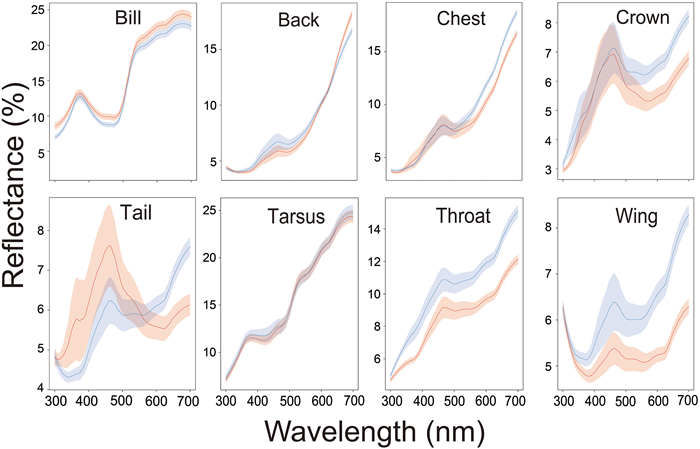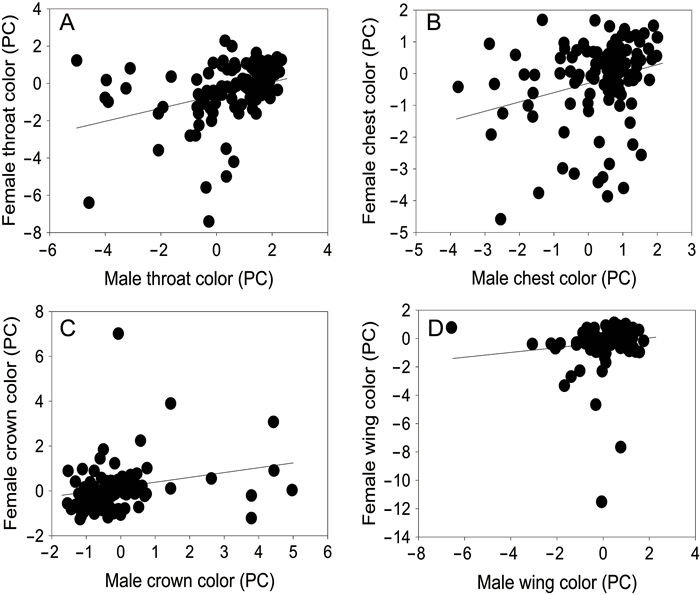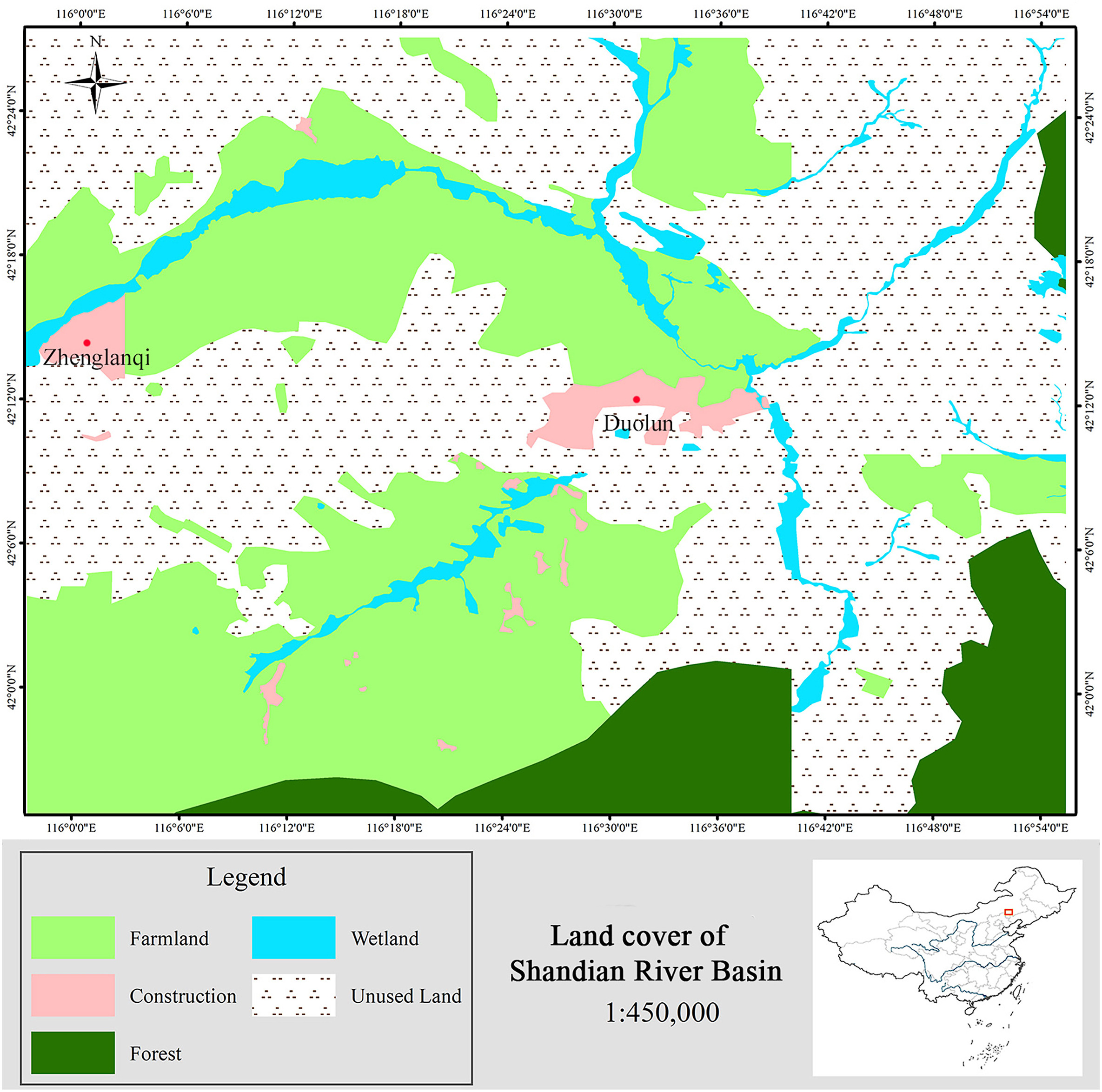Alonso, J.C., Alonso, J.A., Bautista, L.M., 1994. Carrying capacity of staging areas and facultative migration extension in common cranes. J. Appl. Ecol. 31, 212-222.
|
Angerer, J., Han, G., Fujisaki, I., Havstad, K., 2008. Climate change and ecosystems of Asia with emphasis on Inner Mongolia and Mongolia. Rangelands 30, 46-51.
|
Batbayar, N., Yi, K., Zhang, J., Natsagdorj, T., Damba, I., Cao, L., et al., 2021. Combining tracking and remote sensing to identify critical year-round site, habitat use and migratory connectivity of a threatened waterbird species. Remote Sens. 13, 4049.
|
Benhamou, S., 2011. Dynamic approach to space and habitat use based on biased random bridges. PLoS One 6, e14592.
|
Benhamou, S., Cornélis, D., 2010. Incorporating movement behavior and barriers to improve kernel home range space use estimates. J. Wildlife Manage. 74, 1353-1360.
|
BirdLife International, 2018. White-naped Crane, Grus vipio, Antigone vipio. The IUCN Red List of Threatened Species 2018: e. T22692073A131927305. . (Accessed 29 August 2022).
|
Bridge, E.S., Thorup, K., Bowlin, M.S., Chilson, P.B., Diehl, R.H., Fléron, R.W., et al., 2011. Technology on the move: recent and forthcoming innovations for tracking migratory birds. Bioscience 61, 689-698.
|
Cagnacci, F., Boitani, L., Powell, R.A., Boyce, M.S., 2010. Animal ecology meets GPS-based radiotelemetry: a perfect storm of opportunities and challenges. Phil. Trans. R. Soc. B. 365, 2157-2162.
|
|
Cai, T., Huettmann, F., Lee, K., Guo, Y., 2019. Analyzing stopover and wintering habitats of hooded cranes (Grus monacha): implications for conservation and species dispersion in the East Asia. Pakistan J. Zool. 51, 1323.
|
|
Calenge, C., 2011. Analysis of Animal Movements in R: the adehabitatLT Package. R Foundation for Statistical Computing, Vienna.
|
Chen, Y., Yu, Y. -t., Meng, F., Deng, X., Cao, L, Fox, A.D., 2021. Migration routes, population status and important sites used by the globally threatened Black-faced Spoonbill ( Platalea minor): a synthesis of surveys and tracking studies. Avian Res. 12, 74.
|
|
del Hoyo, J., Elliott, A., Christie, D., 2018. Handbook of the Birds of the World. Lynx Edicions, Barcelona.
|
DeNiro, M.J., Epstein, S., 1978. Influence of diet on the distribution of carbon isotopes in animals. Geochim. Cosmochim. Ac. 42, 495-506.
|
|
Dugan, P.J., 1981. The importance of nocturnal foraging in shorebirds: a consequence of increased invertebrate prey activity. In: Jones, N.V., Wolff, W.J. (Eds. ), Feeding and Survival Strategies of Estuarine Organisms. Marine Science, vol. 15. Springer, Boston, pp. 251-260.
|
Elphick, C.S., Oring, L.W., 2003. Conservation implications of flooding rice fields on winter waterbird communities. Agr. Ecosyst. Environ. 94, 17-29.
|
Fedriani, J.M., Palomares F., Delibes, M., 1999. Niche relations among three sympatric Mediterranean carnivores. Oecologia 121, 138-148.
|
Fox, A.D., Elmberg, J., Tombre, I.M., Hessel, R., 2017. Agriculture and herbivorous waterfowl: a review of the scientific basis for improved management. Biol. Rev. 92, 854-877.
|
Gibbs, J.P., 2000. Wetland loss and biodiversity conservation. Conserv. Biol. 14, 314-317.
|
Hahn, S., Hoye, B.J., Korthals, H., Klaassen, M., 2012. From food to offspring down: tissue-specific discrimination and turn-over of stable isotopes in herbivorous waterbirds and other avian foraging guilds. PLoS One 7, e30242.
|
Hamer, K.C., Furness, R.W., 1993. Parental investment and brood defence by male and female great skuas Catharacts skua: the influence of food supply, laying date, body size and body condition. J. Zool. 230, 7-18.
|
Harris, J., Mirande, C., 2013. A global overview of cranes: status, threats and conservation priorities. Chinese Birds 4, 189-209.
|
Higuchi, H., Pierre, J.P., Krever, V., Andronov, V., Fujita, G., Ozaki, K., et al., 2004. Using a remote technology in conservation: satellite tracking White-Naped Cranes in Russia and Asia. Conserv. Biol. 18, 136-147.
|
Hirzel, A.H., Posse, B., Oggier, P.A., Crettenand, Y., Glenz, C., Arlettaz, R., 2004. Ecological requirements of reintroduced species and the implications for release policy: the case of the bearded vulture. J. Appl. Ecol. 41, 1103-1116.
|
Hobson, K.A., Hughes, K.D., Ewins, P.J., 1997. Using stable-isotope analysis to identify endogenous and exogenous sources of nutrients in eggs of migratory birds: applications to Great Lakes contaminants research. Auk 114, 467-478.
|
Hobson, K.A., Sirois, J., Gloutney, M.L., 2000. Tracing nutrient allocation to reproduction with stable isotopes: a preliminary investigation using colonial waterbirds of Great Slave Lake. Auk 117, 760-774.
|
Horne, J.S., Garton, E.O., Krone, S.M., Lewis, J.S., 2007. Analyzing animal movements using Brownian bridges. Ecology 88, 2354-2363.
|
IUCN, 2012. Conservation of the East Asian-Australasian Flyway and its threatened waterbirds, with particular reference to the Yellow Sea. . (Accessed 29 March 2022).
|
Jia, Y., Liu, Y., Jiao, S., Guo, J., Lu, C., Zhou, Y., et al., 2021. Shifting of the migration route of White-Naped Crane ( Antigone vipio) due to wetland loss in China. Remote Sens. 13, 2984.
|
Jones, J., 2001. Habitat selection studies in avian ecology: a critical review. Auk 118, 557-562.
|
Karanth, K.U., Sunquist, M.E., 1995. Prey selection by tiger, leopard and dhole in tropical forests. J. Anim. Ecol. 64, 439-450.
|
Karanth, K.U., Sunquist, M.E., 2000. Behavioural correlates of predation by tiger ( Panthera tigris), leopard ( Panthera pardus) and dhole ( Cuon alpinus) in Nagarahole, India. J. Zool. 250, 255-265.
|
Keddy, P.A., Fraser, L.H., Solomeshch, A.I., Junk, W.J., Campbell, D.R., Arroyo, M.T., et al., 2009. Wet and wonderful: the world's largest wetlands are conservation priorities. Bioscience 59, 39-51.
|
Kirby, J.S., Stattersfield, A.J., Butchart, S.H., Evans, M.I., Grimmett, R.F., Jones, V.R., et al., 2008. Key conservation issues for migratory land- and waterbird species on the world's major flyways. Bird Conserv. Int. 18, S49-S73.
|
Kranstauber, B., Kays, R., LaPoint, S.D., Wikelski, M., Safi, K., 2012. A dynamic Brownian bridge movement model to estimate utilization distributions for heterogeneous animal movement. J. Anim. Ecol. 81, 738-746.
|
Kuhn, C.E., Johnson, D.S., Ream, R.R., Gelatt, T.S., 2009. Advances in the tracking of marine species: using GPS locations to evaluate satellite track data and a continuous-time movement model. Mar. Ecol. Prog. Ser. 393, 97-109.
|
Lambin, E.F., Turner, B.L., Geist, H.J., Agbola, S.B., Angelsen, A., Bruce, J.W., et al., 2001. The causes of land-use and land-cover change: moving beyond the myths. Global Environ. Chang. 11, 261-269.
|
Lei, J., Jia, Y., Zuo, A., Zeng, Q., Shi, L., Zhou, Y., et al., 2019. Bird satellite tracking revealed critical protection gaps in East Asian-Australasian Flyway. Int. J. Environ. Res. Public Health 16, 1147.
|
|
Liu, Q., Tong, Y., 2003. The effects of land use change on the ecoenvironmental evolution of farming-pastoral region in Northern China: with an emphasis on Duolun county in Inner Mongolia. Acta Ecol. Sin. 23, 1025-1030.
|
Liu, H., Zhang, S., Li, Z., Lu, X., Yang, Q., 2004. Impacts on wetlands of large-scale land-use changes by agricultural development: the small Sanjiang Plain, China. AMBIO: J. Hum. Environ. 33, 306-310.
|
Liu, C., Jiang, H., Zhang, S., Li, C., Hou, Y., Qian, F., 2013. Multi-scale analysis to uncover habitat use of red-crowned cranes: implications for conservation. Curr. Zool. 59, 604-617.
|
McMahon, B.F., Evans, R.M., 1992. Nocturnal foraging in the American white pelican. Condor 94, 101-109.
|
|
Meine, C.D., Archibald, G.W., 1996. The Cranes: status survey and conservation action plan. IUCN, Gland, Switzerland, and Cambridge.
|
Monsarrat, S., Benhamou, S., Sarrazin, F., Bessa-Gomes, C., Bouten, W., Duriez, O., 2013. How predictability of feeding patches affects home range and foraging habitat selection in avian social scavengers? PLoS One 8, e53077.
|
Nendel, C., Hu, Y., Lakes, T., 2018. Land-use change and land degradation on the Mongolian Plateau from 1975 to 2015 - a case study from Xilingol, China. Land Degrad. Dev. 29, 1595-1606.
|
|
Ogden, L.J.E., Hobson, K.A., Lank, D.B., 2004. Blood isotopic (δ13C and δ15N) turnover and diet-tissue fractionation factors in captive dunlin (Calidris alpina pacifica). Auk 121, 170-177.
|
Parnell, A., Jackson, A., 2013. siar: stable isotope analysis in R. R package version 4.2. . (Accessed 30 August 2022).
|
Pielke, R.A., 2005. Land use and climate change. Science 310, 1625-1626.
|
R Development Core Team., 2017. R: a language and environment for statistical computing and graphics. Foundation for Statistical Computing, Vienna. Available at: .
|
Tomkiewicz, S.M., Fuller, M.R., Kie, J.G., Bates, K.K., 2010., Global positioning system and associated technologies in animal behaviour and ecological research. Phil. Trans. R. Soc. B. 365, 2163-2176.
|
Wang, C., Liu, H., Li, Y., Dong, B., Qiu, C., Yang, J., et al., 2021a. Study on habitat suitability and environmental variable thresholds of rare waterbirds. Sci. Total Environ. 785, 147316.
|
Wang, Y., Damba, I., Zhao, Q., Xie, Y., Deng, X., Ga, R., et al., 2021b. Organising a juvenile ratio monitoring programme for 10 key waterbird species in the Yangtze River floodplain: analysis and proposals. Avian Res. 12, 72.
|
|
Wetland International, 2012. Waterbird Population Estimates, fifth edition. Summary Report. Wetlands International, Wageningen.
|
|
Wu, H.Z., Ruhan, A., Guo, T.B., Sun, Z.Y., 2011. Impacts of land use change on ecosystem services value in Duolun County of Inner Mongolia based on RS and GIS. Sci. Geog. Phisica Sin. 31, 110-116.
|
Wu, D., Hu, C., Zhang, M., Li, Z., Su, H., 2020. Foraging habitat selection of overwintering Black-necked Cranes in the farming area surrounding the Caohai Wetland, Guizhou Province, China. Avian Res. 11, 5.
|
|
Xia, S., Yu, X., Millington, S., Liu, Y., Jia, Y., Wang, L., et al., 2017. Identifying priority sites and gaps for the conservation of migratory waterbirds in China's coastal wetlands. Biol. Conserv. 210, 72-82.
|
Xiang X., Jin L., Yang Z., Zhang N., Zhang F., 2021. Dramatic shifts in intestinal fungal community between wintering Hooded Crane and Domestic Goose. Avian Res. 12, 1.
|
Xu, X., Jiang, J., Lei, Y., Wang, C., Qing, B., Ding, C., 2022. Using stable isotope to compare the habitat use and trophic level between the new and old breeding range of wild Crested Ibis in the early breeding season. Avian Res. 13, 100007.
|
Yang, H., Chen, B., Barter, M., Piersma, T., Zhou, C., Li, F., et al., 2011. Impacts of tidal land reclamation in Bohai Bay, China: ongoing losses of critical Yellow Sea waterbird staging and wintering sites. Bird Conserv. Int. 21, 241-259.
|
Zhang, D., Zhou, L., Song, Y., 2015. Effect of water level fluctuations on temporal-spatial patterns of foraging activities by the wintering Hooded Crane (Grus monacha). Avian Res. 6, 16.
|
Zou, H., Wu, Q., 2006. Feeding habitat of red-crowned crane and white-napped crane during their courtship period in Zhalong wetland. J. Appl. Ecol. 17, 444-449.
|
Zou, H., Wu, Q., Niu, M., 2005. Comparing of feeding habitat selection between the wild and semi-domestic White-naped Crane during the pre-breeding period in Zhalong Wetland. Chinese J. Zool. 4, 45-50.
|
|
Zou, H.F., Feng, X.D., Wu, Q.M., Wu, Y.N., Hao, M., Ma, J.Z., 2012. Diet component and preference of white-naped crane during courtship period in Zhalong Nature Reserve. J. Northeast For. Univ. 40, 69-76.
|



 DownLoad:
DownLoad:








 Email Alerts
Email Alerts RSS Feeds
RSS Feeds